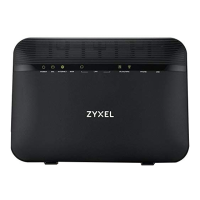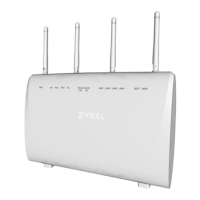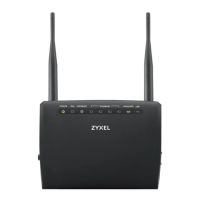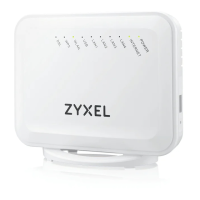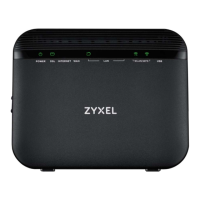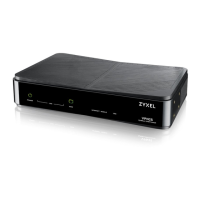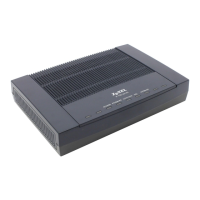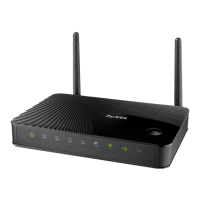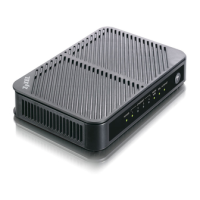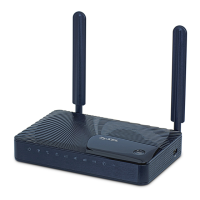Chapter 22 Voice
VMG8924-B10D/B30D User’s Guide
227
22.5 The Phone Device Screen
Use this screen to view detailed information of the phone devices. To access this screen, click VoIP >
Phone > Phone Device.
Figure 130 VoIP > Phone > Phone Device
SIP DSCP Mark
Setting
Enter the DSCP (DiffServ Code Point) number for SIP message transmissions. The VMG creates
Class of Service (CoS) priority tags with this number to SIP traffic that it transmits.
RTP DSCP Mark
Setting
Enter the DSCP (DiffServ Code Point) number for RTP voice transmissions. The VMG creates Class
of Service (CoS) priority tags with this number to RTP traffic that it transmits.
Timer Setting
SIP Register
Expiration
Duration
Enter the number of seconds your SIP account is registered with the SIP register server before it is
deleted. The VMG automatically tries to re-register your SIP account when one-half of this time
has passed. (The SIP register server might have a different expiration.)
SIP Register Fail
Re-try timer
Enter the number of seconds the VMG waits before it tries again to register the SIP account, if
the first try failed or if there is no response.
Session Expires
(SE)
Enter the number of seconds the VMG lets a SIP session remain idle (without traffic) before it
automatically disconnects the session.
Min-SE Enter the minimum number of seconds the VMG lets a SIP session remain idle (without traffic)
before it automatically disconnects the session. When two SIP devices start a SIP session, they
must agree on an expiration time for idle sessions. This field is the shortest expiration time that the
VMG accepts.
Dialing Interval Selection
Dialing Interval
Selection
Enter the number of seconds the VMG should wait after you stop dialing numbers before it
makes the phone call. The value depends on how quickly you dial phone numbers.
DNS SRV
Enable DNS SRV
Select this to have the VMG use DNS procedures to resolve the SIP domain and find the SIP
server’s IP address, port number and supported transport protocol(s).
The VMG first uses DNS Name Authority Pointer (NAPTR) records to determine the transport
protocols supported by the SIP server. It then performs DNS Service (SRV) query to determine the
port number for the protocol. The VMG resolves the SIP server’s IP address by a standard DNS
address record lookup.
The SIP Server Port and REGISTER Server Port fields in the General section above are grayed out
and not applicable and the Transport Type can also be set to AUTO if you enable this option.
Apply
Click Apply to save your changes.
Cancel Click Cancel to restore your previously saved settings.
Table 102 VoIP > SIP > SIP Service Provider > Add new provider/Edit (continued)
LABEL DESCRIPTION
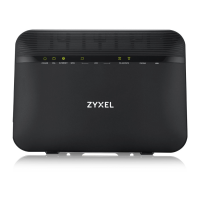
